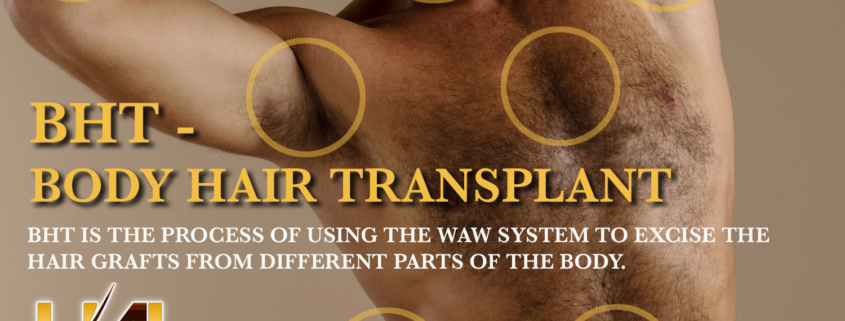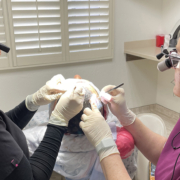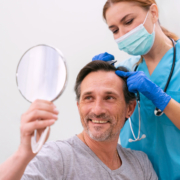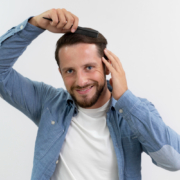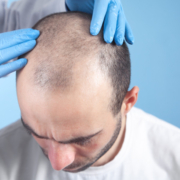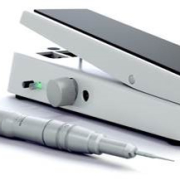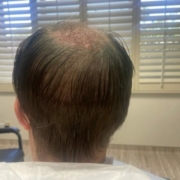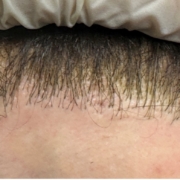BHT – Body Hair Transplant – A Comprehensive Overview
Are you struggling with hair loss and finding traditional hair transplant methods insufficient to meet your needs? There’s an innovative solution that might just be the answer you’ve been searching for: BHT -body hair transplant. This groundbreaking procedure offers hope to those with limited scalp donor supply, and in this comprehensive overview, we’ll delve into the intricacies of BHT and its potential benefits for hair restoration.
Join us on this journey to discover the ins and outs of BHT- body hair transplant, from understanding the procedure and donor areas to comparing it with traditional hair transplants. Learn about the ideal candidates, benefits and limitations, post-transplant hair growth expectations, and expert tips for successful outcomes. We’ll also share real-life success stories and introduce you to a renowned BHT clinic in Scottsdale, Arizona.
Key Takeaways
-
Body Hair Transplant (BHT) is an effective solution to hair restoration, utilizing the FUE technique and donor areas such as back, chest, and beard.
-
BHT provides more comprehensive coverage than traditional transplants but may not be suitable for all individuals. Ideal candidates should consider cost & financing options before proceeding.
-
Successful outcomes can be achieved by selecting experienced professionals who understand potential risks & complications of the procedure and have experience with this type of procedure.
Understanding BHT: Body Hair Transplant
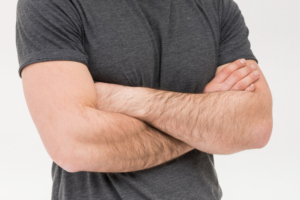
Body hair transplantation (BHT) is a groundbreaking surgical procedure in medicine that offers a new lease on life for those struggling with hair loss. Harvesting hair from various body parts, such as the beard, chest, back, stomach, legs, and arms, body hair transplants provide an effective solution for hair restoration.
It allows BHT to serve as a viable alternative to traditional hair transplant methods, especially for those with a limited scalp donor supply.
Despite its many advantages, BHT also has some drawbacks, such as:
-
Hypopigmentation at the donor site of facial hair
-
Keloid formation
-
Folliculitis
-
In growing transplanted hair due to implanted grafts
However, choosing appropriate donor areas and adhering to expert advice can help mitigate many of these drawbacks, leading to successful hair restoration.
The BHT Procedure
The BHT procedure involves extracting hair follicles from donor areas and implanting them onto the scalp with precision, typically utilizing the FUE method. It’s worth mentioning that butylated hydroxytoluene (BHT) is unrelated to the hair transplant procedure, despite sharing the same acronym. It is actually a common antioxidant found in various products and cosmetics.
For those considering BHT, choosing the most appropriate donor areas and adopting a strategic approach to transplantation is of utmost importance. For example, transplanting thick beard hair grafts in the hairline and temple region should be avoided to achieve a natural look in these delicate hair regions.
Instead, body hairs from legs and arms, which are finer and shorter compared to scalp donor area hair, can be used for a softer, more natural outcome. Mixing body hair with existing scalp hair is recommended to achieve a more unified, aesthetically pleasing appearance.
For more information on our BHT services, visit BHT – Body Hair Transplant.
Donor Areas for BHT – body hair transplant
When it comes to BHT, the most common donor areas include the back, chest, and beard. Beard and chest hair are preferred sources due to their structure and abundance. Beard hair, in particular, has a higher visual density and unique chemical characteristics that make it a valuable donor source.
The outcomes of animal studies on transplanting chest hair micro grafts to the scalp have shown promising results. These grafts have demonstrated an extended growth and an approximate fourfold increase in their length, mirroring the growth attributes of native scalp hairs in the crown area.
Harvesting beard hair should be done strategically, with hair follicles collected from the cheeks, submandibular area, and along the mandibular region first, leaving the moustache and chin areas for last.
Comparing BHT to Traditional Hair Transplants
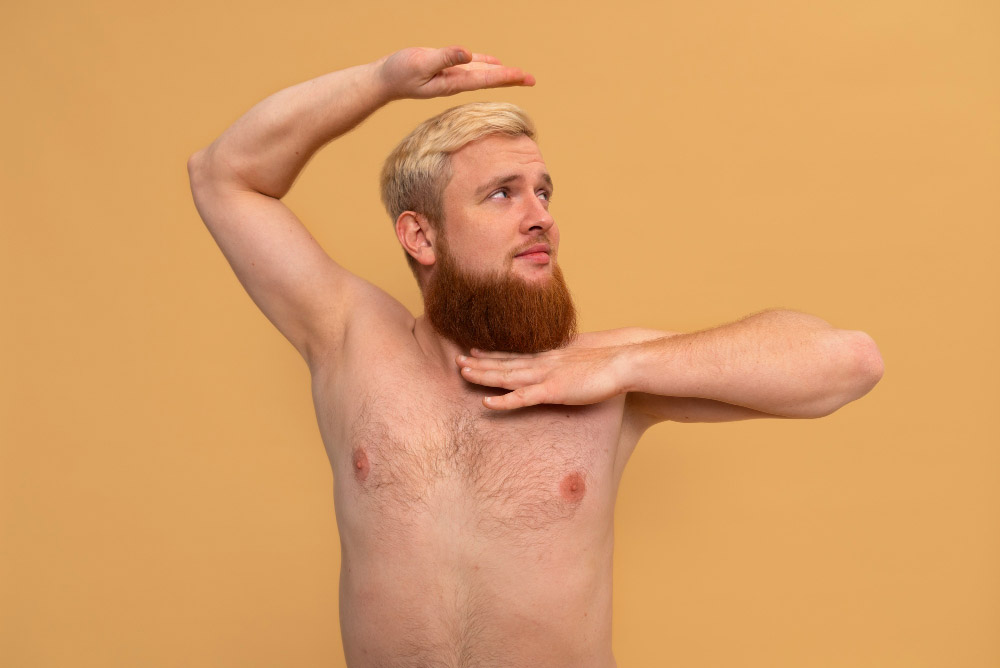
BHT is more labor-intensive and costly than traditional hair transplants. However, it can be a viable choice for individuals with inadequate scalp donor hair. Using body hair from other areas than from the beard can be difficult to extract due to its thin nature, and the position of extraction can be uncomfortable for both the patient and surgeon.
Combination grafting, a technique that utilizes both scalp and body hair, has been used in cases such as:
-
Norwood grade IV
-
Diffuse pattern hair loss
-
Norwood grade III
-
Norwood grade VII
This approach offers a promising solution for those seeking to restore hair through a more comprehensive hair restoration option.
Ideal Candidates for BHT
BHT is ideal for adults aged 18 and above, within the preferred age range of 25 to 65. They should meet the following criteria:
-
Suffer from severe baldness or hair loss
-
Desire an increase in coverage on specific areas
-
Have limited donor hair available from traditional sites such as the scalp and back of the neck
-
Have body hair with similar qualities to scalp hair
-
Be in good overall health.
A consultation with a medical professional is necessary to assess your eligibility for a body hair transplant. During this meeting, the doctor will evaluate your general health and the condition of your hair to ascertain if you are eligible for a body hair transplant procedure. Additionally, you and your doctor will decide on the preferred donor site and the estimated number of hair grafts necessary to achieve the desired outcome.
Benefits and Limitations of BHT
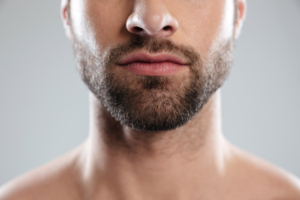
BHT offers several benefits for those seeking hair restoration solutions, including additional grafts and coverage for more severe baldness. However, BHT may have limitations in terms of density, texture, and growth rate compared to natural scalp hair.
The rationale behind utilizing body hair follicles in BHT is to address the lack of donor hair follicles and consequently boost the visual density and coverage for higher degrees of baldness. Bear in mind that transplanted body hair tends to curl once it reaches a certain length and may not completely match the native scalp hair in terms of thickness, growth rate, and hair cycle.
Post-Transplant Hair Growth and Expectations
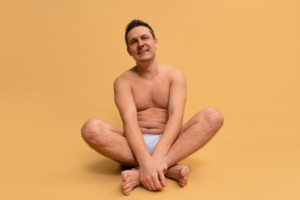
Hair growth after BHT can vary, generally starting within a few weeks to a couple of months following the procedure. Initially, the new hair may have a thin and curly texture, similar to body hair.
Full growth from the transplants can be expected after 12 months, although it may take up to 18 months in some cases. During this time, the hair is likely to become longer and thicker, and may also experience changes in texture.
It’s important to have realistic expectations about the results, based on limited evidence from scientific literature, and understand that data and individual outcomes may vary.
Cost and Financing Options for BHT
The cost of BHT procedures can range from $7,500 to $20,000, depending on factors such as the number of grafts, experience of the surgeon, and location of the clinic. Although this procedure may require a substantial investment, the potential benefits and enduring results that BHT can provide should be taken into account.
Certain clinics, including Hair 4 Life, provide financing options for those seeking BHT. This means that you can potentially access BHT treatments without having to pay the full amount upfront, making it a more feasible option for those interested in this innovative hair restoration solution.
Expert Tips for Successful BHT Outcomes

Choosing an experienced surgeon with a proven record in BHT procedures is key to ensuring a successful outcome. Additionally, having realistic expectations about the results and understanding the risks and potential complications associated with the procedure is crucial. A thorough safety assessment can help in evaluating these factors.
Another important factor for a successful BHT outcome is considering a combination of scalp and body hair in the transplant process. This approach can create a more natural-looking hairline and provide additional coverage, ultimately leading to a more aesthetically pleasing result.
Real-Life BHT – body hair transplant Success Stories
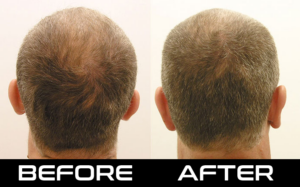
Real-life BHT success stories showcase impressive density and aesthetic results achieved through the procedure. These stories serve as a testament to the potential benefits and transformative power of BHT for those struggling with hair loss or thinning.
Bear in mind that individual results may differ based on factors such as hair type, scalp condition, and the surgeon’s expertise. However, hearing about the success stories of others can provide inspiration self confidence, and hope for those considering BHT as a solution for their hair restoration needs.
BHT by Hair 4 Life in Scottsdale
Hair 4 Life in Scottsdale, Arizona, is a renowned hair loss and transplant clinic that offers a comprehensive range of hair loss treatments tailored to suit all stages and causes of hair loss. The clinic specializes in the following procedures to effectively halt hair loss:
Surgical:
-
ARTAS robotic FUE
-
FUE – WAW, Ugraft, manual
-
FUT
Non-Surgical:
-
PRP
-
Regenera Activa Progenitor Cell
-
PDO threads for hair loss
Testing:
-
Trichotest
-
Trichlab
In addition, the clinic offers BHT services performed by Dr. Ramona Kelemen and her assistant Jessica.
Choosing Hair 4 Life for your BHT procedure ensures you’re in the capable hands of seasoned professionals committed to helping you achieve optimal results on your hair restoration journey.
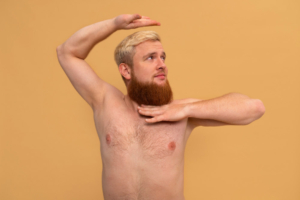
Dr. Ramona Kelemen
Dr. Ramona Kelemen is the founder of Hair 4 Life and holds two doctorate degrees: M.D. (EU) and N.D. As a hair restoration and transplant physician, she specializes in both surgical and non-surgical methods to restore lost hair and revitalize existing hair follicles.
With 22 years of expertise in the hair transplant field, Dr. Kelemen is highly knowledgeable in BHT and other hair restoration techniques. Opting for Dr. Kelemen for your BHT procedure instills confidence in her ability to deliver exceptional, personalized results that meet your specific needs and goals.
Summary
In conclusion, body hair transplant (BHT) offers a fresh perspective on hair restoration solutions for individuals with limited scalp donor supply. By understanding the procedure, donor areas, and comparing it to traditional hair transplants, you can make a more informed decision about whether BHT is the right option for you.
Remember to seek consultation with a medical professional, such as Dr. Ramona Kelemen at Hair 4 Life in Scottsdale, to evaluate your eligibility for BHT and discuss your specific hair restoration goals. With the right approach and expert guidance, BHT can potentially transform your life and help you regain the confidence that comes with a full head of hair.
For more information on our BHT services, visit BHT – Body Hair Transplant.
Frequently Asked Questions
What is BHT?
Body hair transplant, also known as body hair transplantation, is a surgical procedure that involves harvesting hair from other parts of the body and transplanting it onto the scalp. This technique can be beneficial for individuals who have limited donor supply on their scalp or those who have experienced unsuccessful hair restoration surgeries in the past.
The process begins with the selection of an appropriate donor area, which typically includes regions such as the back, chest, or beard. The hairs in these regions are often resistant to baldness and, therefore, serve as ideal candidates for transplantation onto the scalp. Once the donor area is chosen, hair follicles are extracted using a specialized technique such as FUE (Follicular Unit Extraction) via Ugraft.
After the extraction, the harvested hair follicles are then carefully implanted onto the scalp, ensuring their proper alignment and orientation to achieve a natural appearance. The surgeon skillfully places each hair follicle, considering factors such as density, direction, and angle, to achieve optimal results. The implantation is key, and at Hair 4 Life, this step is done by Dr. Kelemen and Jessica, her assistant, who have a combine experience of 49 years!
What is the success rate of BHT -body hair transplant?
The beard hair is closer to the hair on shin than in the chin. This is also a common place to receive donors without scalping. Typically, beards are used over chests for donating because beards are longer with shorter textures. Beards are successful in 80-90% cases.
How much does body hair to head transplant cost?
The cost of removing bald spots from your hair is determined by several different factors. However, costs are mostly dependent upon how much equipment you need. Grafts can cost between Rs 40 and Rs 120. Hair transplants usually need between 500 – 500 grafts.
Can you transplant hair from your chest to my head?
Is chest hair transplantable for the heads? Definitely chest hair is suitable for a hair transplant. The transplant type is typically employed in situations where the donor site is not sufficient.
Can you transplant hair from your chest to my head?
Is chest hair transplantable for the heads? Definitely chest hair is suitable for a hair transplant. The transplant type is typically employed in situations where the donor site is not sufficient.
How long does hair take to grow after BHT transplant
The length of time it takes for hair to fully grow after a body to scalp transplant can vary based on individual factors and the specific circumstances of the transplant. Generally, hair can start to grow within a few weeks to a couple of months after the transplant. However, it may take several months or even up to a 18 months for the hair to fully grow and achieve its desired length. It’s important to note that the growth rate and outcomes can also be influenced by factors such as the health and condition of the scalp, the type of transplant procedure performed, and the skill and expertise of the surgeon.
What is the success rate of BHT transplant?
The success rate of BHT transplant in humans is quite satisfactory at 60-95%, with hair from the beard donor area having the highest success rate at 80-85%. These figures remain comparable to the industry standard of FUE and FUT transplants.
How much does body hair to head transplant cost?
The cost of a body hair to head transplant procedure typically ranges from $7500 to $20,000.
What is the BHT procedure?
Body Hair Transplantation (BHT) is a unique procedure that involves extracting hair follicles from other parts of the body and transplanting them to the scalp. This technique combines body and scalp hair grafts, and is best suited for patients whose donor sites lack viable amounts of follicles. BHT is performed using Follicular Unit Extraction (FUE) and is a no stitch technique.
Can you transplant hair from your chest to my head?
Chest hair can be used for a body-to-scalp transplant, as it will retain the same properties such as length, density and texture when transplanted to the scalp. Mixing body hairs from different sources helps create a natural look when completely bald areas on scalp are restored. However, chest hair should not be used in the frontal hairline. Therefore, yes, chest hair can be transplanted to your head.
What is the BHT procedure?
Body hair transplants involves the extraction of follicular unit hair follicular tissue from the body: chest, arms, legs and back and implanting them in the scalp. This procedure is used when the donor hair from the scalp has been exhausted. This procedure requires careful consideration of the implantation site, to yield the maximum coverage and blending them so the hair transplant will look as close to normal as possible.
Can I transplant hair from my chest to my head?
Do chest hairs have any effect on the head of a person? No! Body hairs are used as fillers to increase the density of the hair transplant.
What are the advantages of Body to Scalp hair transplant?
Firstly, it widens the donor supply options by utilizing hair from different parts of the body. This is particularly useful for patients with limited scalp donor areas, such as those with advanced hair loss. Additionally, body hair transplantation can be a viable option for individuals who have previously undergone unsuccessful scalp hair restoration procedures or have inadequate donor areas due to scarring or previous trauma.
However, it is important to note that body to scalp hair transplant may not always yield the same density and characteristics as natural scalp hair. The hair characteristics, such as texture and growth rate, vary across different body regions. Careful selection of the donor area and appropriate patient counseling are crucial to manage expectations and ensure patient satisfaction.
In conclusion, body to scalp hair transplant is a technique that provides an alternative solution for individuals with limited donor supply or previous unsuccessful hair restoration surgeries. The procedure involves transferring hair follicles from body regions with high resistance to baldness onto the scalp. While it offers several benefits, there are certain limitations to consider. Through proper patient evaluation and precise surgical techniques, body to scalp hair transplant can be a valuable option for individuals seeking to increase their hair density.
Contact Hair 4 Life in Scottsdale
Dr. Kelemen integrates conventional and naturopathic medicine to provide the best of what both worlds have to offer. She creates a unique, compassionate, accepting environment for her patients. You only have to read the reviews to find out how she empowers her clients to look and feel their best. They leave the clinic with their heads held high!
To find out which procedure is best suited to your needs, you are invited to come into Hair4Life for a free consultation. Treatments are kept as affordable and accessible as possible so come in and talk to us.
Contact Us or call Hair 4 Life at (480) 525-4547 to schedule an appointment and get your free consultation.
For more information on our BHT services, visit BHT – Body Hair Transplant.

